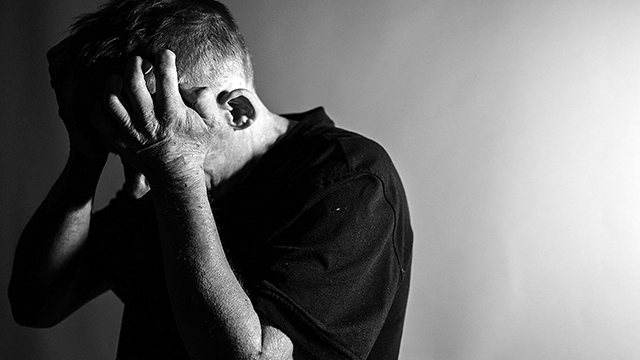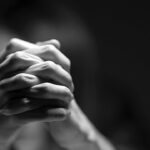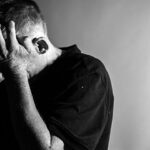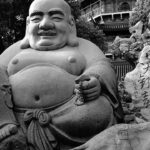THE H.O.P.E CONCEPT: MASTERING CRISES WITH THE HELP OF SHIATSU
Shiatsu has the potential to be the most holistic and effective form of support for people in crisis situations. To do this, we need to understand how crises affect our system, which dynamics manifest themselves and how we can best address them.
What an age! Crises and trouble spots everywhere. Wars. The environment. The inflationary spiral. Collapsing labour structures. Plus social tensions and political turbulence. There is no end in sight. We are talking here about crises at the macro level, i.e. crises that are beyond our control. And regardless of whether they are staged or exaggerated by the media, the basic vibration is palpable, the basic mood is colouring, the general weather situation is askew. This can be compounded by crises at the micro level. Crises that have arisen from our personal space, whether of a health, emotional or financial nature. And all too often, global and individual crises overlap, leaving us neither time to breathe nor time to digest.
Generally speaking, we speak of a crisis when a person is confronted with events that are so intense in scope and duration that the individual’s ability to cope is exceeded and the available coping strategies are no longer sufficient. These events can occur quickly and immediately or build up over a longer period of time. Ultimately, however, it is always about some kind of loss or change.
But whether it is a crisis of loss or a crisis of life change, every crisis also contains the opportunity to resolve it. However, if no solution is found, the negative course of a crisis can become more and more entrenched, culminating in a catastrophe. Comprehensive support is therefore needed. Shiatsu is ideal for this because of its targeted work with the body, soul and spirit. Because it takes the resources of all three levels of our being powerfully combined to really manoeuvre ourselves out of a crisis…
INDIVIDUAL AND YET FOLLOWING A PATTERN
A crisis is always a highly personal matter. What throws one person off course is completely irrelevant to another and vice versa, of course. The skills we have at our disposal for dealing with crisis situations are the result of all our previous decisions and experiences. And these are different for every person. What is therefore an important basis is respect and understanding for each individual situation, as it is always a matter of subjective experience.
And yet: once we are in a tangible crisis, there are certain dynamics and patterns that are similar and whose understanding provides us with valuable orientation in our work with Shiatsu. Of course, life flavours even the best theory with a pinch of uncertainty, so this division into phases is not a staircase carved in stone, where one step regularly follows another. The phases can overlap, they can repeat themselves. In addition, different psychological perspectives lead to different weightings or other sub-points. However, the essence is the same: we will encounter the following phases in a person affected by a crisis…
PHASE 1: SHOCK AND NO
This can’t be true! Suddenly life has turned upside down and we don’t know how to deal with it. We don’t want to accept what has just happened, what we have just experienced. Helplessness spreads, as does disorientation. In addition, there is great stress as a result of the loss of control over the internal or external situation. You have the feeling of being stuck in a terrible dream and hope that you will wake up and everything will be as it once was. Most crises begin with a shock that leads to an attempt to distance oneself from the new reality that has entered one’s life. This dissociation is a protective function of the soul so as not to be overwhelmed by the overwhelming challenges and the emotions that accompany them. Depending on the type and intensity of the shock to be processed, this state can last for hours or years. It is often accompanied by traumatisation, as a trauma can be seen as a continuation of a crisis in which the shock and separation have been so significant that permanent changes have manifested in the nervous system.
PHASE 2: RECOGNITION AND EMOTIONS
The new reality now slowly penetrates the consciousness. The realization that what you didn’t want to be true is true after all. What was previously denied now crashes over the soul like a tidal wave and it becomes clear that things cannot and will not go on as usual. The reaction to this is usually very emotional. Whether anger, fear, disappointment, bitterness or sadness or a mixture of all of these, chaotically changing and almost impossible to control. One question comes to the fore: Why me? Why me of all people? Feelings of guilt develop. Guilty parties are sought. In this phase, people also like to negotiate with fate, with higher powers, with the future. If. Then. If the crisis resolves itself, then this or that is sworn.
But it’s still there, the crisis. The emotional low point has been reached. Further resistance is futile. A depressive mood can spread, accompanied by withdrawal, lack of motivation and resignation. It is important to allow this phase to happen, to allow yourself to feel deeply, because only then can you really arrive in reality and begin to work with it. Every crisis is an opportunity to find a treasure. To do this, however, you have to set out on a journey and not shy away from the dark valleys.
PHASE 3: GET TO WORK
The term crisis comes from the Greek word krísis, which stands for a decisive turn, for a decision. To get out of a crisis, you need exactly that: a decision that leads to a turnaround. To do this, the crisis situation must be fully recognised and accepted. It is what it is. Clinging to what was before will lead nowhere. We cannot take the parts of our identity that were defined by the life situation of the past with us into the future. Letting go is the order of the day. In this sense, every crisis is a form of loss. This is sometimes painful. But it is also a great opportunity to give the crisis deep individual meaning. Leave the old behind. Discover something new. What personal development does this crisis require of me? What can I gain from the crisis?
A simple but clear basic rule applies here: if you do the same thing today as you did yesterday, tomorrow will be exactly the same as today. So you have to do something different, you have to do something different if you want to create a new situation. Insights, attitudes, values, connections, behaviours – with a little courage and determination, all of these can change towards a constructive relationship with yourself and the world. The responsibility for overcoming the crisis lies solely in your own hands.
PHASE 4: INTEGRATION
The new behaviours have been fully integrated into everyday life. The self-image has changed. And with it the room for manoeuvre and the ability to act. Something has changed. There is a new overall situation. A new phase of life has begun. Crisis mastered. Yes, getting out of a crisis takes a lot of strength. But we also gain strength and take it with us. We become stronger. Clearer. More aware. And we have acquired the ability to deal with major challenges. That helps for the next crisis. And how can Shiatsu help?
THE H.O.P.E CONCEPT AND SUPPORT WITH SHIATSU
The H.O.P.E concept has translated the energetic dynamics of the different phases into the language of the meridians and the five elements and developed a concrete strategy for action that has been tried and tested in practice. It is a kind of map that provides targeted orientation and rapid support. We can use this map for the benefit of our clients and significantly shorten the duration of a crisis or make it more harmonious. However, a map is only ever a reflection of reality and not reality itself. If we encounter other landscapes or paths on the journey, these can complement and expand the map.
H(ELPING)
Help to let go of insecurity, fears, the past and limiting behavioural patterns
In the first phase of a crisis, the kidney and large intestine meridians are particularly affected. Any form of insecurity leads to the energy of the kidneys being weakened, because the kidneys are connected to the emotion of fear and fear weakens the cohesive function of the kidneys. We lose support, courage and willpower. We are overwhelmed by panic and helplessness. We desperately search for the one straw we can cling to. Again, the law of opposition times connects the large intestine meridian to the kidneys and the law of opposition times states that the energy can only be in one meridian or the other. Just as it cannot be midnight and midday at the same time. So if the kidneys are weakened, there is automatically a fullness in the large intestine meridian. The large intestine meridian represents the power of no, holding on to the past, clinging to false hopes and beliefs. It may continue to maintain control over the familiar under all circumstances, even if this means negating the new life situation: The shock is usually accompanied by not wanting to believe it… It can’t be true!
This dynamic between the kidney and large intestine meridians naturally also influences their partner meridians in the respective element and it is also true here that the energy can only be in one or the other meridian. A weakening of the kidney meridian leads to tension in the bladder meridian, which is directly linked to the sympathetic nervous system. Fear activates our fight, flight or freeze mechanism. And the fullness in the large intestine meridian weakens the lungs, weakens the breathing, weakens the connection to the body and to the moment, both of which are expressions of the elemental spirit Po, which is connected to the lungs. This elemental spirit also stands for the future, for hope, for the big yes to life, also all aspects that are completely lost in the first crisis phase.
In this constellation, it is primarily the large intestine meridian that absorbs the most energy, which is why it should also be the focus of treatment. This is because once the energy is in the metal element, it can no longer flow further into the water element and nourish the kidneys. Many fears and insecurities that we are confronted with in a crisis situation are ultimately also the result of the individual beliefs that shape our world view, and letting go of beliefs that no longer fulfil a meaningful function for us is also associated with the energy of the large intestine meridian.
O(RGANIZING)
Reorganisation of the entire energy field in order to be able to deal with change and challenge
The next crucial element is the wood element. In a crisis situation, it is not nourished by the weakened water element and is curtailed by the controlling metal element. In other words, it becomes constricted and dry. Such wood loses its flexibility and therefore its ability to adapt to the new conditions. The climatic factor associated with the wood element is the wind. If the wind of change becomes a full-blown storm, i.e. a crisis, then dry wood can even break. Dry wood can also easily catch fire. This is accompanied by an increased emotional charge. All it takes is one spark and it burns brightly. This tenseness and the heated feelings are characteristics of phase 2 in the course of the crisis.
However, we need the energy of the wood element in a vital state. We need it to be flexible and to initiate change. We need the qualities of the liver meridian to develop new plans and visions. We need the qualities of the gallbladder meridian to make powerful decisions. Targeted work with these two meridians can significantly shorten the stuckness in phase 2.
In a crisis situation, the connection between the liver meridian and the kidney meridian is severed. The water element nourishes the wood element. The water element melts due to insecurity and anxiety. However, the liver meridian needs clarity, self-awareness and a deep connection with its own core, all aspects of the kidneys, in order to develop inspiring plans that lead to growth and development. If the connection is severed, the quality of the liver withers into a barren plant without leaves or flowers. What should the gallbladder meridian then choose? If it doesn’t get a landing offer? If it is constantly held back by the large intestine meridian? With Shiatsu we can harmonise the energies of the liver and gallbladder in such a way that it first adapts more easily to the new situation and its challenges. And on the basis of this, new ideas and possibilities can develop.
P(ROTECTING)
Preserving and protecting the core of the soul and its values
Every crisis requires reorientation. And if reorientation is necessary, why not focus on what is really important to us? To do this, we have to let go of what is not really important. These are often the values and beliefs associated with the aspect of our personality that has been more influenced by the outside world. From parents, caregivers, friends, school, societal beliefs, collective assumptions. Beneath this, however, lies something that I like to call the core of the soul. It senses and knows exactly what it really needs, what is really good for it. Unfortunately, access to this core is often lost. With Shiatsu we can strengthen this connection, because our deepest inner values can be a very valuable compass to manoeuvre us out of crisis situations and to take a new direction in life, in which we come ever closer to our true self.
The core of the soul is reached through the connection between the heart and kidneys. The Shen of the fire element recognises the dormant potential of the water element, connects with it and brings it to expression. We speak of the shao-yin axis, which can be strengthened and nourished through targeted treatment. However, this only works when the large intestine meridian no longer draws energy from the kidneys and the waves of emotions from the wood element no longer cloud the view inwards.
E(MERGING)
The emergence of new possibilities and directions
The previous work has harmonised and stabilised the energetic matrix to such an extent that we can now look ahead. We can support this excellently with the lung meridian and abdominal work. Or with other treatment approaches. The first three points are the most important: Get out of panic and denial. Through the feelings to the ability to adapt and change. Connect with your inner strength and wisdom. If there is sun, soil and water, the grass starts to grow by itself. It is the same with the emergence of new possibilities and directions. But the lung meridian also stands for a positive view of the future. And a strong centre is not easily thrown off course. This is why these two aspects have always proved very effective in treatments.
CONCRETE IMPLEMENTATION
It all depends on the crisis phase in which we encounter our clients. It is therefore obvious that the focus of treatment can also vary. The described energetic dynamics within the meridians and the five elements also meet the individual personality structure. If, for example, the wood quality dominates in a person, these aspects will become more prominent. Nevertheless, this does not really change the basic structure of the energetic dynamic, it just distorts it somewhat.
A real transformation is needed to really get out of crises. Ultimately, this step is the responsibility of the individual person. However, if we transform the energy system that influences the mind and emotions, we make this step much easier. And in many cases, it is our work that makes this possible in the first place. The H.O.P.E. concept helps us to understand how we can best contribute to this transformation in which phase.
PRACTICAL EXAMPLE
The concrete work with this concept covers many aspects. Which techniques can I use to best support the corresponding qualities of the respective meridians? Which acupuncture points do I choose? I would like to give an example here.
Large Intestine 17 / Tian Ding
Tian stands for heaven. Ding are the traditional bowls in front of Taoist temples into which incense sticks are placed. A Ding stands on three legs, which represent the aspects of Jing, Qi and Shen, which is why it is also good to offer three incense sticks. In our bodies, the skull can be seen as such a bowl. The three legs for this bowl are the spine and the sternocleidomastoids, on which Large Intestine 17 is also located. In classical acupuncture books there is little information about Large Intestine 17, although it is one of the master points for the psyche.
The Bowl Thing is supposed to help us receive the heavenly message. We can also call it inspiration. Or higher guidance. But if the Skull Thing is so full of convictions, opinions, beliefs or fears, then it will not be able to receive this message. We lose the connection upwards. We are not able to think beyond the current crisis situation. The bowl must therefore be emptied. This is an aspect of letting go and cleansing, i.e. aspects of colon energy. Colon 17 is also an excellent way of addressing the vagus nerve, which in turn helps to switch off the stress pattern of the sympathetic nervous system. Treatment of colon 17 therefore also has a strengthening effect on the kidneys.
This point can be incorporated perfectly into the treatment, regardless of which Shiatsu style you practise.






